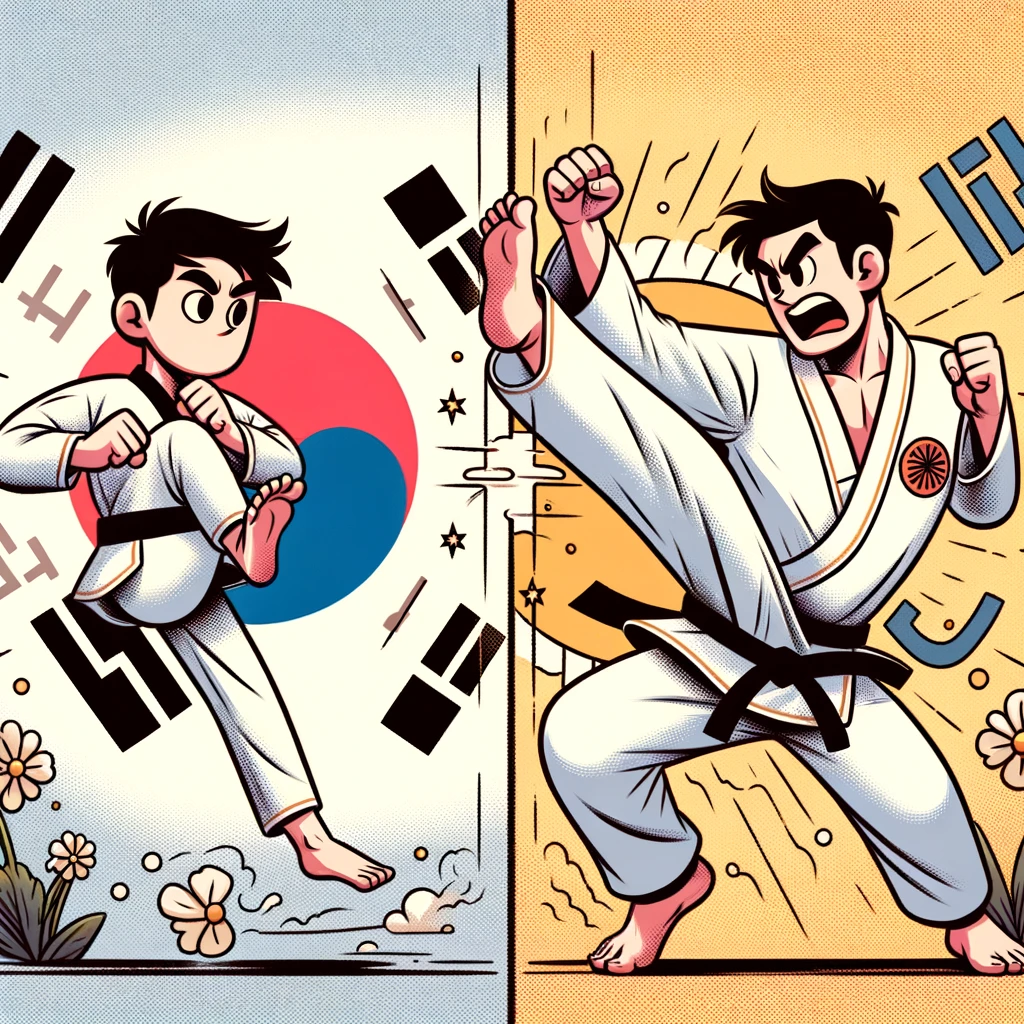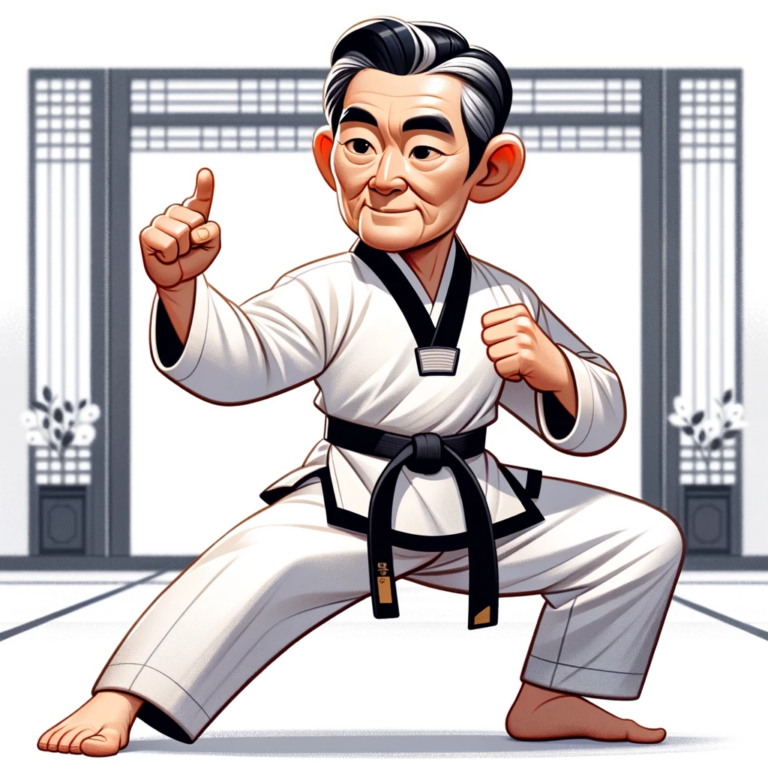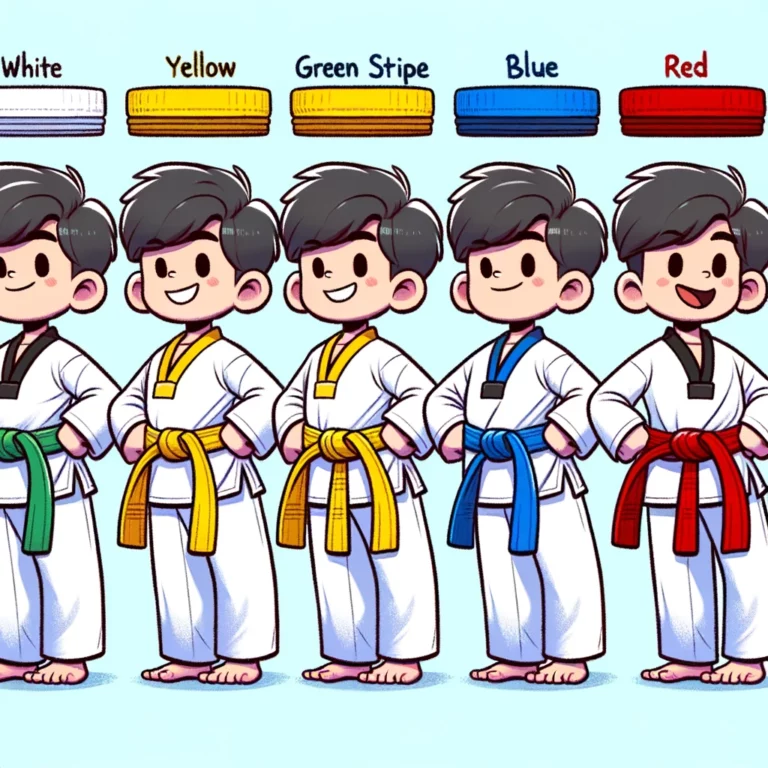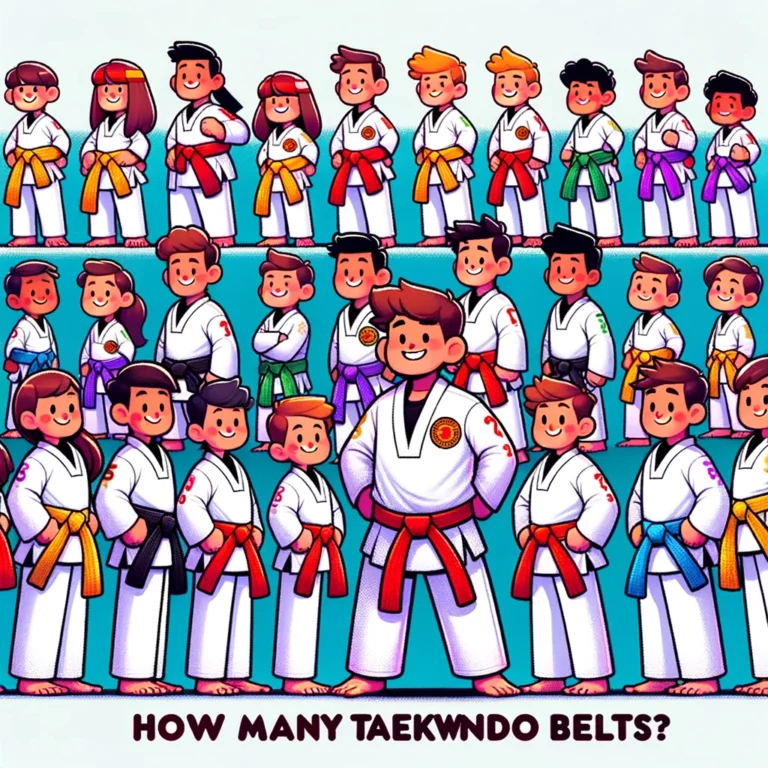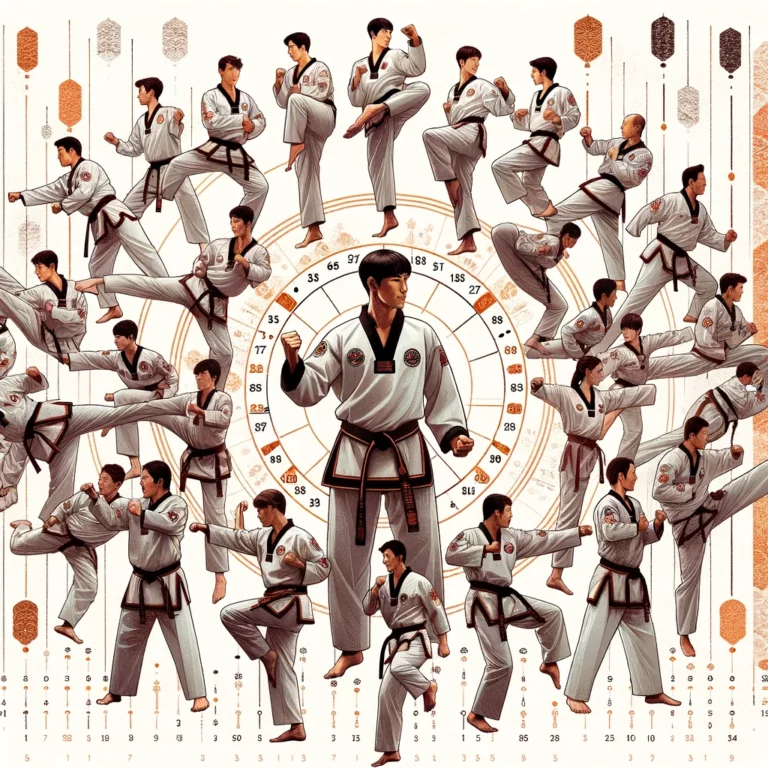What is the Difference Between Taekwondo and Karate?
Origins and History: Unveiling the roots of Tae Kwon Do and Karate
Origins and History: Unveiling the roots of Tae Kwon Do and Okinawan Karate
Tae Kwon Do and Karate, two widely practised martial arts, have deep-rooted origins and rich historical backgrounds. Tae Kwon Do, meaning “the way of the foot and hand,” originated in Korea during the 1940s and 1950s. It has roots in traditional Korean martial arts and received significant influences from Chinese martial arts styles. Focusing on powerful kicks and strikes, Tae Kwon Do became famous as a self-defence system and an Olympic sport.
On the other hand, Karate, meaning “empty hand,” originated in the Ryukyu Kingdom, now Okinawa, Japan. Its history traces back hundreds of years when Okinawan practitioners developed self-defence techniques to protect themselves against Japanese samurai forces. Okinawan Karate has roots in Chinese martial arts and was influenced by Japanese instructors. Over time, Karate evolved into various styles, each with its unique techniques and forms. It gained widespread recognition and popularity in the early 20th century, with masters like Gichin Funakoshi spreading its teachings globally. The Japan Karate Association was established by his followers to promote his teachings.

Disciplines and Techniques: Understanding the unique styles, forms, and hand techniques in Tae Kwon Do and Karate
Tae Kwon Do and Karate are distinct martial arts disciplines with unique styles and forms. Tae Kwon Do, a Korean martial art, emphasizes powerful kicks and fast, dynamic movements. It is known for its acrobatic kicks, such as the spinning hook and flying side kicks. In contrast, Karate, originating in Okinawa, Japan, focuses more on punches, strikes, and blocks. Karate focuses on hand techniques as the primary mode of attack. It emphasizes controlled, precise movements and incorporates both hand and leg techniques.
In Tae Kwon Do, practitioners learn a range of kicks, including front, roundhouse, and side kicks. These kicks are delivered quickly and precisely, allowing fighters to maintain distance and strike forcefully. Additionally, Tae Kwon Do practitioners also learn various hand techniques, such as punches and palm strikes, as well as various blocks and mysterious movements. They often practice their techniques through solo forms, known as poomsae, which allow them to refine their movements and build muscle memory.
On the other hand, Karate practitioners focus on developing solid strikes through various punches, such as the straight punch, hook punch, and uppercut. They also train in different forms of strikes, such as elbow strikes and knee strikes, which are effective in close-range combat. Karate incorporates knee and elbow strikes along with other striking methods. In addition to strikes, Karate forms incorporate a range of blocks and counterattacks to defend against incoming attacks. Katas, or predetermined sequences of movements, are an integral part of Karate training, helping practitioners improve their technique, balance, and coordination. Techniques Karate employs include punching, kicking, and joint manipulations, showcasing its diversity and rigorous training.
Philosophical Influences: Exploring the underlying principles and beliefs in Tae Kwon Do and Karate
Tae Kwon Do and Karate are martial arts that have deep-rooted philosophical influences. Both disciplines emphasize character development, self-discipline, and respect for oneself and others. These underlying principles and beliefs are the foundation for the practitioners’ journey and growth in their respective arts.
In Tae Kwon Do, the principle of “Do” represents the way of life and the pursuit of ethical and moral values. It emphasizes the importance of cultivating a strong mind along with physical strength. “Do” encompasses honesty, integrity, perseverance, and indomitable spirit. Tae Kwon Do practitioners strive to uphold these values in their training and daily lives.
On the other hand, Karate emphasises the “Budo” principle, which translates to “the martial way.” The philosophy behind “Budo” centres around harmony within oneself and with others. Karate practitioners seek a balanced state of mind and body, integrating physical techniques with mental discipline. Additionally, the ” Budo ” concept encompasses non-aggression and self-control, promoting peace rather than violence.
These philosophical influences in Tae Kwon Do and Karate go beyond the physical aspects of martial arts. They provide practitioners with a holistic approach to life, promoting personal growth, mindfulness, and cultivating positive values. By embracing these underlying principles and beliefs, Tae Kwon Do and Karate students develop their martial arts skills and become well-rounded individuals who strive for excellence in all aspects of life.
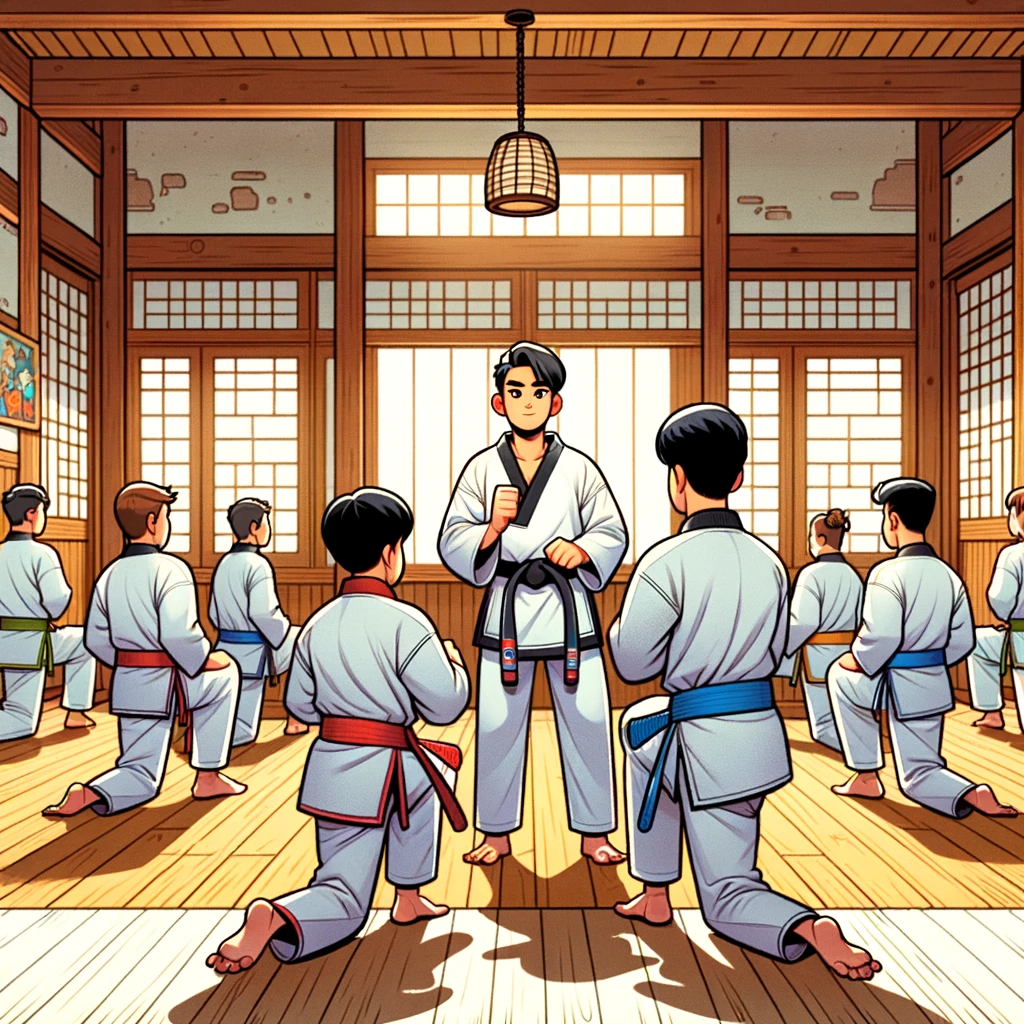
Training Methods: Comparing the approaches and methodologies used in Tae Kwon Do and Karate
One key aspect differentiating Tae Kwon Do and Karate lies in their training methods. Tae Kwon Do focuses on a more dynamic, fast-paced approach, emphasizing kicks, speed, and agility. Students often engage in intense cardiovascular exercises to develop strength and endurance while practising various forms or patterns known as poomsae. These forms consist of predetermined movements that allow practitioners to train their balance, coordination, and technique. Taekwondo training encompasses a variety of skills beyond just kicking, including blocks, punches, open-handed strikes, take-downs, throws, and joint locks. Additionally, Tae Kwon Do practitioners frequently participate in sparring sessions, applying their techniques in controlled combat situations and refining their timing, accuracy, and defensive skills. Taekwondo sparring combines both defensive and offensive techniques, positioning it as a key component alongside ‘Kata’ in Taekwondo practice.
On the other hand, Karate emphasises precision and concentration more. Its training methods often involve repeated practice of fundamental techniques called kihon, such as punches, strikes, and blocks. Karateka develops strength through strengthening exercises such as knuckle push-ups and striking training on makiwaras or striking pads. Katas, or series of prearranged movements, are a core component of Karate training, aiming to refine technique, develop focus, and cultivate a deeper understanding of the art. Alongside kihon and kata, Karate practitioners also engage in Kumite, which refers to sparring sessions where they apply their techniques against an opponent, focusing on timing, distance, and counterattacks.
In summary, Tae Kwon Do and Karate differ in their training methods, with Tae Kwon Do favoring a dynamic and fast-paced approach. At the same time, Karate places a greater emphasis on precision and concentration. Both martial arts offer unique methods to develop physical and mental attributes, shaping practitioners into well-rounded individuals.
Belt Systems: Examining the ranking systems and progression in Tae Kwon Do and Karate
The belt system plays a crucial role in both Tae Kwon Do and Karate, visually representing a practitioner’s skill level and progress in the art. In Tae Kwon Do, the belt colours follow a specific progression from white to black, with intermediary colours representing different stages of development. A white belt signifies a beginner, while a black belt marks the highest level of mastery. Each belt colour represents the practitioner’s dedication and commitment to the art, with rigorous training and testing required to advance to the next level.
Similarly, Karate also incorporates a belt system that signifies different proficiency levels. The progression in Karate belt colours may vary depending on the specific style or association, but the concept remains the same. From white to black, practitioners must demonstrate their knowledge of techniques, forms, and the philosophies behind the art. The belt system motivates students, giving them a tangible goal to strive for and a sense of accomplishment as they advance through the ranks. In Shotokan Karate, the belt system is structured similarly but uses different terminology for ranks and has a distinct historical development compared to Taekwondo.
• In Tae Kwon Do’s belt, colours follow a specific progression from white to black. • Intermediary colours represent different stages of development in Tae Kwon Do. • A white belt signifies a beginner, and a black belt marks the highest level of mastery. • Rigorous training and testing are required to advance to the next level in Tae Kwon Do.
• Karate also incorporates a belt system that signifies different levels of proficiency. • The progression in Karate belt colours may vary depending on the style or association. • Practitioners must demonstrate knowledge of techniques, forms, and philosophies behind the art to advance in Karate. • The belt system motivates students and gives them tangible goals to strive for.
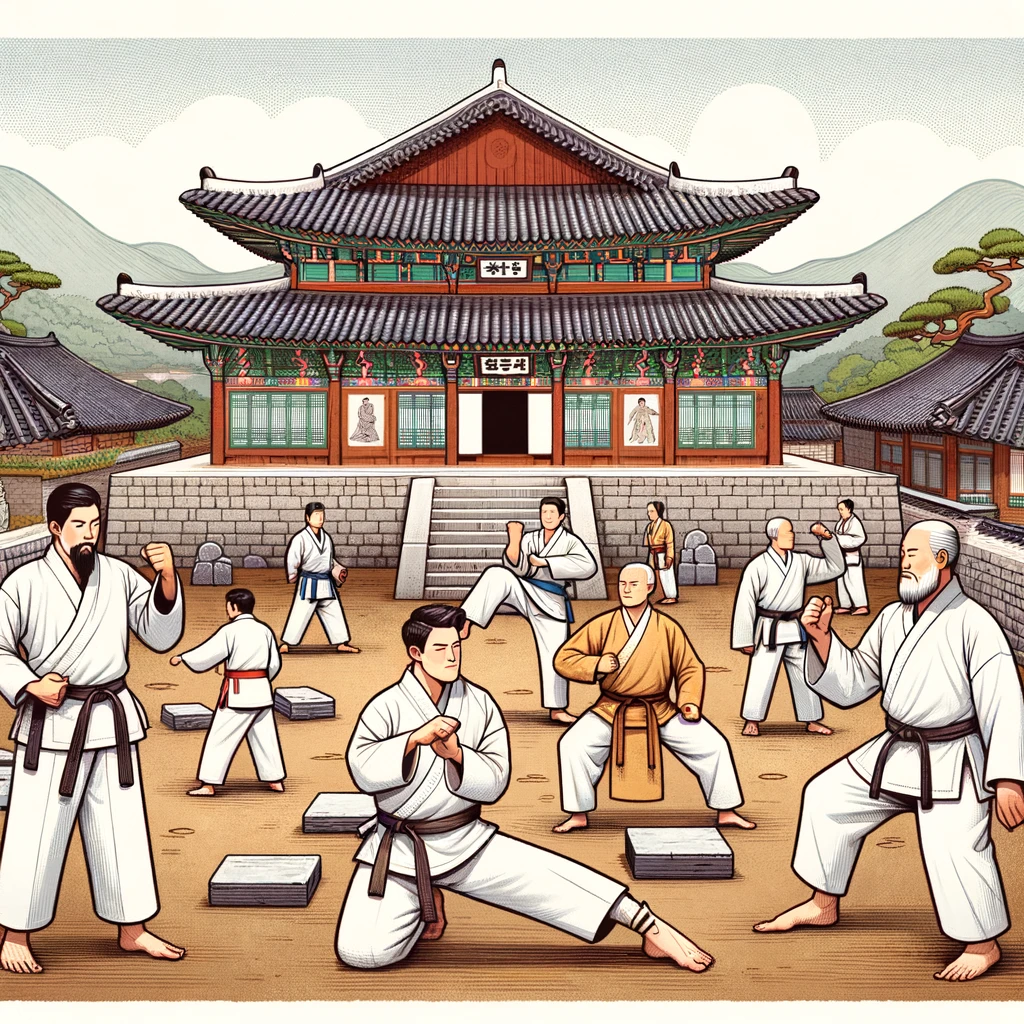
What is the origin of Tae Kwon Do and Karate?
Tae Kwon Do originated in Korea, while Karate originated in Okinawa, Japan.
What are the different disciplines and techniques in Tae Kwon Do and Karate?
Tae Kwon Do focuses on high, fast, and mighty kicks, while Karate emphasizes strikes, punches, and blocks.
How do the philosophies differ in Tae Kwon Do and Karate?
Tae Kwon Do follows discipline, respect, perseverance, and indomitable spirit, while Zen Buddhism influences Karate and emphasizes self-defence, self-discipline, and self-improvement.
What are the training methods used in Tae Kwon Do and Karate?
Tae Kwon Do training involves a combination of basic techniques, forms (poomsae), sparring, and breaking boards, whereas Karate training includes katas (forms), kumite (sparring), and kihon (basic techniques).
How do the belt systems work in Tae Kwon Do and Karate?
Tae Kwon Do and Karate use a belt system to indicate rank and progression. Students start with a white belt and progress through coloured belts, with the black belt being the highest rank.
How long does achieving a black belt in Tae Kwon Do and Karate take?
The time required to achieve a black belt can vary depending on the individual’s dedication, training frequency, and the specific style or school. On average, earning a black belt can take several years of consistent training.
Can one switch from Tae Kwon Do to Karate or vice versa?
Switching from practising Tae Kwon Do to Karate, or vice versa, is possible. While some techniques and philosophies may differ, individuals with prior martial arts experience can often adapt and learn the new style.
Are Tae Kwon Do and Karate suitable for children?
Yes, both Tae Kwon Do and Karate offer classes specifically designed for children. These martial arts can help children develop discipline, focus, confidence, and physical fitness.
Are Tae Kwon Do and Karate competitive sports?
Yes, both Tae Kwon Do and Karate have competitive aspects. They are recognized sports in international competitions such as the Olympics and have their governing bodies overseeing tournaments and championships.
Can practising Tae Kwon Do or Karate help with self-defence skills?
Yes, both Tae Kwon Do and Karate teach self-defence techniques that can be applied in real-life situations. However, it is essential to remember that self-defence training should always prioritize avoiding conflict whenever possible.
Choosing a Martial Arts Style: Guidance for selecting between Tae Kwon Do and Karate
Choosing between Tae Kwon Do and Karate can be a challenging decision, as both martial arts styles offer unique benefits and characteristics. Here are some factors to consider when selecting a martial art:
- Physical Demands: Tae Kwon Do is known for its high-energy, physically demanding nature, requiring quick movements, fast kicking, and rapid punching. This martial art style emphasizes agility and speed, making it an excellent choice for those looking for a vigorous workout. On the other hand, Karate is more traditional and slower-paced, focusing on hand techniques and precise movements. It offers a balanced approach that combines strength and control.
- Training Style: Tae Kwon Do training often involves intense cardiovascular exercises, dynamic kicking drills, and competitive sparring sessions. It is geared towards building endurance, flexibility, and explosive power. In contrast, Karate training emphasizes traditional techniques and forms, known as katas. Karate practitioners spend significant time perfecting their hand techniques, blocks, and stances, fostering discipline and concentration.
- Personal Goals: Consider what you aim to achieve through martial arts training. If you seek a physically demanding workout and enjoy the thrill of competition, Tae Kwon Do might be the better choice. Its focus on high kicks and dynamic movements can provide an exhilarating experience. However, if you are more interested in mastering traditional techniques and forms, Karate might be more suitable. Karate’s emphasis on hand techniques and precise movements can offer a deeper understanding of martial arts principles.
- Instructor Experience: Research the instructor’s experience and qualifications in the martial art style you’re interested in. A qualified instructor can provide valuable guidance and help you achieve your goals. Look for instructors who have a strong background in their respective martial arts and a proven track record of teaching students effectively.
By considering these factors, you can make an informed decision and choose the martial arts style that aligns with your interests, goals, and physical capabilities.
Can one switch from Tae Kwon Do to Karate or vice versa?
Switching from practising Tae Kwon Do to Karate, or vice versa, is possible. While some techniques and philosophies may differ, individuals with prior martial arts experience can often adapt and learn the new style.
Are Tae Kwon Do and Karate suitable for children?
Yes, both Tae Kwon Do and Karate offer classes specifically designed for children. These martial arts can help children develop discipline, focus, confidence, and physical fitness. Martial arts classes also emphasize self-discipline and personal conduct, making them an excellent choice for young students.
Competition and Sport: Analyzing the competitive aspects of Tae Kwon Do and Karate
Both Tae Kwon Do and Karate have a strong competitive aspect, with various tournaments and competitions held throughout the year. Here are some key differences:
- Competition Style: Tae Kwon Do competitions primarily focus on sparring, patterns (poomsae), and breaking. Sparring matches are dynamic and fast-paced, showcasing the practitioners’ kicking techniques and agility. Patterns involve performing a series of predetermined movements, demonstrating precision and control. Breaking tests the ability to apply techniques with power and accuracy. In contrast, Karate competitions emphasize kata, kumite, and kobudo. Kata involves performing a series of choreographed movements, highlighting the practitioner’s technique and form. Kumite is sparring, where competitors engage in controlled combat, focusing on timing and strategy. Kobudo involves the use of traditional weapons, adding an extra dimension to Karate competitions.
- Rules and Regulations: Tae Kwon Do competitions are governed by the World Taekwondo Federation (WTF), which sets the rules and regulations for sparring and patterns. The emphasis is on safety, with protective gear and strict guidelines to prevent injuries. Karate competitions are governed by the World Karate Federation (WKF), which establishes the rules for kata, kumite, and kobudo. Both organizations ensure fair play and standardize the competition formats.
- Scoring System: In Tae Kwon Do competitions, points are awarded for valid techniques, such as kicks to the head or body. The scoring system encourages high, fast, and powerful kicks, rewarding precision and control. Karate competitions use a similar point-based system, with points awarded for valid techniques, including punches, strikes, and kicks. Penalties are given for fouls, ensuring that competitors adhere to the rules and maintain sportsmanship.
Understanding these competitive aspects can help you decide which martial art aligns with your interests and goals. Whether you prefer the dynamic sparring of Tae Kwon Do or the strategic kumite of Karate, both martial arts offer exciting opportunities for competition and personal growth.
Are Tae Kwon Do and Karate competition sports?
Yes, both Tae Kwon Do and Karate have competitive aspects. They are recognized sports in international competitions such as the Olympics and have their governing bodies overseeing tournaments and championships. In a karate competition, the scoring, rules, and styles are meticulously defined, with distinctions between light contact and full contact karate competitions, and specific scoring systems to evaluate performances based on various techniques and their corresponding point values.
Self-Defense and Practicality: Evaluating the effectiveness of Tae Kwon Do and Karate for self-defense
Both Tae Kwon Do and Karate can be effective for self-defense, but it’s essential to evaluate their practicality in real-life situations. Here are some factors to consider:
- Techniques: Tae Kwon Do focuses on kicking techniques, with an emphasis on high, fast, and powerful kicks. These techniques can be highly effective in self-defense situations, allowing practitioners to maintain distance and deliver forceful strikes. However, it’s important to consider the practicality of high kicks in confined spaces or against multiple attackers. Karate, on the other hand, emphasizes hand techniques, including punches, strikes, and blocks. These techniques are versatile and can be applied effectively in close-range combat, making Karate a practical choice for self-defense.
- Training: Tae Kwon Do training often focuses on competition, with an emphasis on sparring and patterns. While this training can develop speed, agility, and precision, it’s important to ensure that self-defense scenarios are also addressed. Karate training, with its focus on traditional techniques and forms, often includes practical self-defense applications. Practitioners learn to apply their techniques in real-life situations, developing the ability to respond effectively to various attacks.
- Adaptability: Both Tae Kwon Do and Karate require adaptability and quick thinking in self-defense situations. Tae Kwon Do practitioners must be able to transition from high kicks to close-range techniques, while Karate practitioners need to apply their hand techniques and blocks effectively. Consider the style that will allow you to respond effectively to various attacks and situations. Both martial arts emphasize the importance of awareness, timing, and control, which are crucial for self-defense.
By evaluating these factors, you can determine which martial art best suits your self-defense needs. Whether you choose the dynamic kicks of Tae Kwon Do or the versatile hand techniques of Karate, both styles offer valuable skills for protecting yourself in real-life situations.
Can practising Tae Kwon Do or Karate help with self-defence skills?
Yes, both Tae Kwon Do and Karate teach self-defence techniques that can be applied in real-life situations. However, it is essential to remember that self-defence training should always prioritize avoiding conflict whenever possible.

